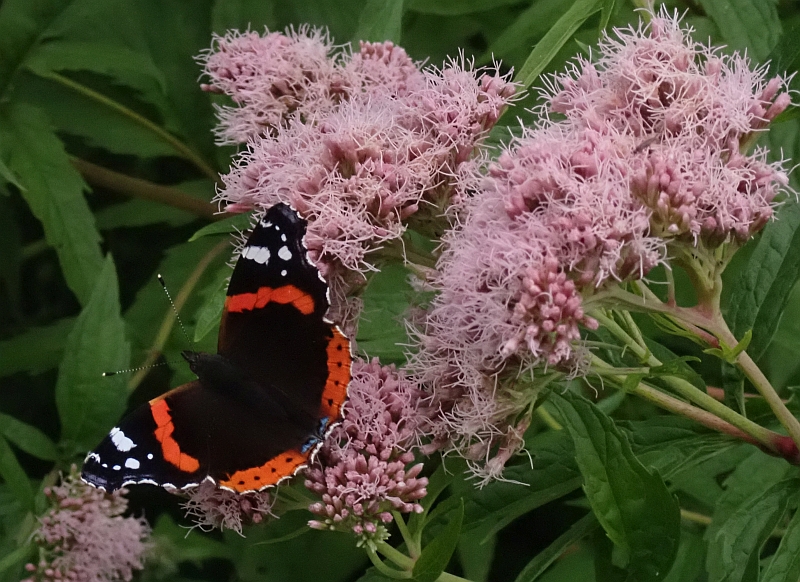Around 25 years ago I started reading scientific papers written by various ethnobotanists on the back of the discovery of the traditional Mediterranean diet – people in mountain villages had low levels of cardiovascular disease. The diet is characterised by eating a lot of fruit and vegetables, whole grains, nuts, legumes, seeds and fish and contains little fat from dairy products and red meat, but rather monounsaturated fat from olive oil and unsalted nuts. Even here in Norway, this is the diet recommended by experts, latest in an article this spring at NRK article in which it’s also suggested that it can also contribute to preventing dementia, Alzheimer’s disease and prostate cancer. Nice to know as this is the diet I’ve followed for some 40 years, although using more dairy products than would have been used.
Reading those articles, it struck me that one component was missing in recommendations and that is a large diversity of notably leafy green vegetables, something not possible for most people in Norway as, unless you are a forager, this isn’t available. In fact, for most people, vegetables seem to be interpreted as tomatoes, cucumbers and squash, all fruits.
One of the first studies I read was Gathered wild food plants in the Upper Valley of the Serchio River (Garfagnana), Central Italy by Andrea Pieroni, published in the journal Economic Botany in 1999. In this study, 133 species
belonging to 48 families were documented and over half were plants used for their leaves and shoots. I could also read in this paper about multispecies dishes for perhaps the first time. Notably, in this area a multispecies soup Minestrella with typically 40 different plants was made and a similar 50 species dish, pistic, traditionally made inland from Venice is also referred to (pistic is also referred to in Stephen Facciola’s Cornucopia II).
This inspired my own multispecies dishes and, a few days ago, 24th August 2023 was the 20th anniversary of my world record salad with 537 plants which lead to me being called Extreme Salad Man on a Norwegian gardening program Grønn Glede the year after! The importance of leafy perennial vegetables and food diversity, both cultivated and foraged also became the subject of my book Around the World in 80 plants.
My main multispecies dishes (with links) made over the years since can be found at the bottom of this post.
On 24th August we decided to mark the 20th anniversary of the world record salad by making a pizza with as many plants as possible, although it was a busy week otherwise so I only managed 229 this time, 225 of which were grown in one of my 3 gardens, the onion garden at the Ringve Botanical Garden, the Væres Venner community garden and my home garden, The Edible Garden. It was served to an unexpecting group of psychologists who had booked a garden tour that evening! They were on a Somatic Experiencing mentoring weekend in Malvik (Vennatjønna Levebruk) and they spend the first evening “grounding themselves” in my garden (this was the second visit)! The list of plants can be downloaded under the pictures below from that evening!
The record pizza ingredients:
Other notable extreme multispecies dishes –
SALADS: 19th August 2001 – 363 different plants (382 ingredients); see https://www.edimentals.com/blog/?p=29492
24th August 2003 – 537 different plants (over 90% were perennials); see https://www.edimentals.com/blog/?p=18997
PESTO: 6th June 2015 – 230 different Alliums (see https://www.edimentals.com/blog/?page_id=1507); a few were biennial (Allium cepa)
FERMENT: 412 varieties (7th June 2015) – a mix of perennials and annuals (see https://www.edimentals.com/blog/?page_id=1544); probably over 80% were perennials!
SALAD FLOWERS: 115 different flowers on 7th July 2015; see https://www.edimentals.com/blog/?page_id=1904 (again probably over 90% flowers of perennials)








 This morning, red admiral butterflies were everywhere in the garden and I counted at least 70 on both Buddleja davidii (butterfly bush / sommerfuglbusk) and Eupatorium cannabinum (hemp agrimony / hjortetrøst) was particularly densely covered!
This morning, red admiral butterflies were everywhere in the garden and I counted at least 70 on both Buddleja davidii (butterfly bush / sommerfuglbusk) and Eupatorium cannabinum (hemp agrimony / hjortetrøst) was particularly densely covered! The long delayed (by COVID) opening of the Onion Garden Chicago took place at the Ringve Botanical Gardens in Trondheim on Friday. Here we grow over 400 different Alliums including over 100 botanical species and some 60 old (with a history from 60-980 years; yes the oldest history goes back to 1040!) Norwegian onions.
The long delayed (by COVID) opening of the Onion Garden Chicago took place at the Ringve Botanical Gardens in Trondheim on Friday. Here we grow over 400 different Alliums including over 100 botanical species and some 60 old (with a history from 60-980 years; yes the oldest history goes back to 1040!) Norwegian onions. 










 Broad beans (bondebønner) and swiss chard (mangold)
Broad beans (bondebønner) and swiss chard (mangold) 

 Shallots (Finnish heritage variety) which were harvested in September 2022 are still looking good:
Shallots (Finnish heritage variety) which were harvested in September 2022 are still looking good: Sonchus oleraceus (common sow-thistle / haredylle), probably my most used veg at this time of year, even though most consider it a weed! WEEDS ARE TO FEED!
Sonchus oleraceus (common sow-thistle / haredylle), probably my most used veg at this time of year, even though most consider it a weed! WEEDS ARE TO FEED!



